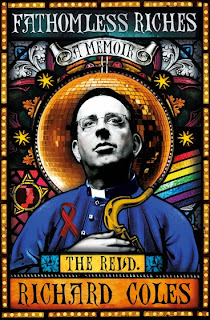Last night I attended the performance of The 5th Province in the MAC. It’s on again in Belfast tonight and will be in the Ardhowen Theatre in Enniskillen on Saturday 7 February. There’s also a open discussion of the piece and the concepts raised by the performance over lunch today (Saturday 31) in the MAC from 1-3pm. Contact the Box Office on (028) 9023 5053 to check if there’s space.
What is the fifth province?
It’s an old Irish mythological term based around the idea of there being five provinces in Ireland … It was a place that the kings would have come together at times of dispute or disagreement, weapons were left outside of this place and they would come in and resolved any issues of conflict that were existing between them all. The idea that when in that place you weren’t controlled by the identities and the status you had outside of it: you were there to resolve conflict.Even as a newcomer, it’s clear that the five dancers have incredible control over their movement and balance. Slowly emerging from the earth covering the stage over five or ten minutes, five bodies became one fluid flowing life form (a little like a human lava lamp) as Andy Garbi’s string accompaniment hit frequencies that resonated with the equipment above the stage.
The upstairs stage in the MAC was covered in compost. Soon Gráinne Maher's costumes were covered too! There was a touch of An Enemy of the People about the performance when space-age mirrored snow shovels were used to shift a tonne of two of it about the stage.
Based on last night’s experience, contemporary dance is also incredibly hard work to watch. It’s not always the case, but The 5th Province has an absence of words and commentary. Dylan had explained:
If we have issues and concerns and questions and troubling about a particular subject it doesn’t mean that we all have to explore it through dialogue in a verbal sense. There are other ways of doing that dialogue, whether that be a physical sense or music.The deliberately abstract nature of the visual narrative – never mind Tim Feehily's careful lighting to disguise the set and only reveal it in phases – raises so many questions in your head as you watch that you’re mentally exhausted trying to figure out what is happening.
You get to make up your own story. Are those bodies coming out of graves? Or was that a creation tale of the provinces of Ireland forming? What looked in the gloom like a flying bed turned out to be four pieces of fractured mirror that gave the audience distorted views of the on-stage performance.
There’s a reminder that five is an awkward number. Two pairs hugging equals one person left out. Or are they just left with a different perspective, able to look on and judge what’s happening? If people aren’t “in the club” do they seek power elsewhere? Is that what the section with the crown was about?
So many questions!
Leading, following, tripping, mirroring, greeting, creating a place of healing with baggage swept to one side, and a middle ground (more accurately a middle mound!), a power-grab and harmony.
Writing this up the morning after the performance, I’m still not sure what to make of the experience. The performers and the creative team who pulled together the show are certainly skilful.
I didn’t find it entertaining in the sense that you leave the building with a glow in your heart. While many films aren’t happy, uplifting stories, they do tend to have a start, a middle and an end, and the film-maker’s perspective is clear, sometimes to the point of becoming a challenge.
Sending 108 MLAs to see a contemporary dance performance might not instantly resolve many of Northern Ireland’s political issues. Since the concepts are drawn out of the performance by each member of the audience, they tend to be – for me at least – relatively simple observations. Maybe it works better at an individual level? Become aware of how you came to have so much baggage and know to set it down and step away. More questions.
In this year of doing new things, first ice hockey, then contemporary dance. What’s next? Opera …


































